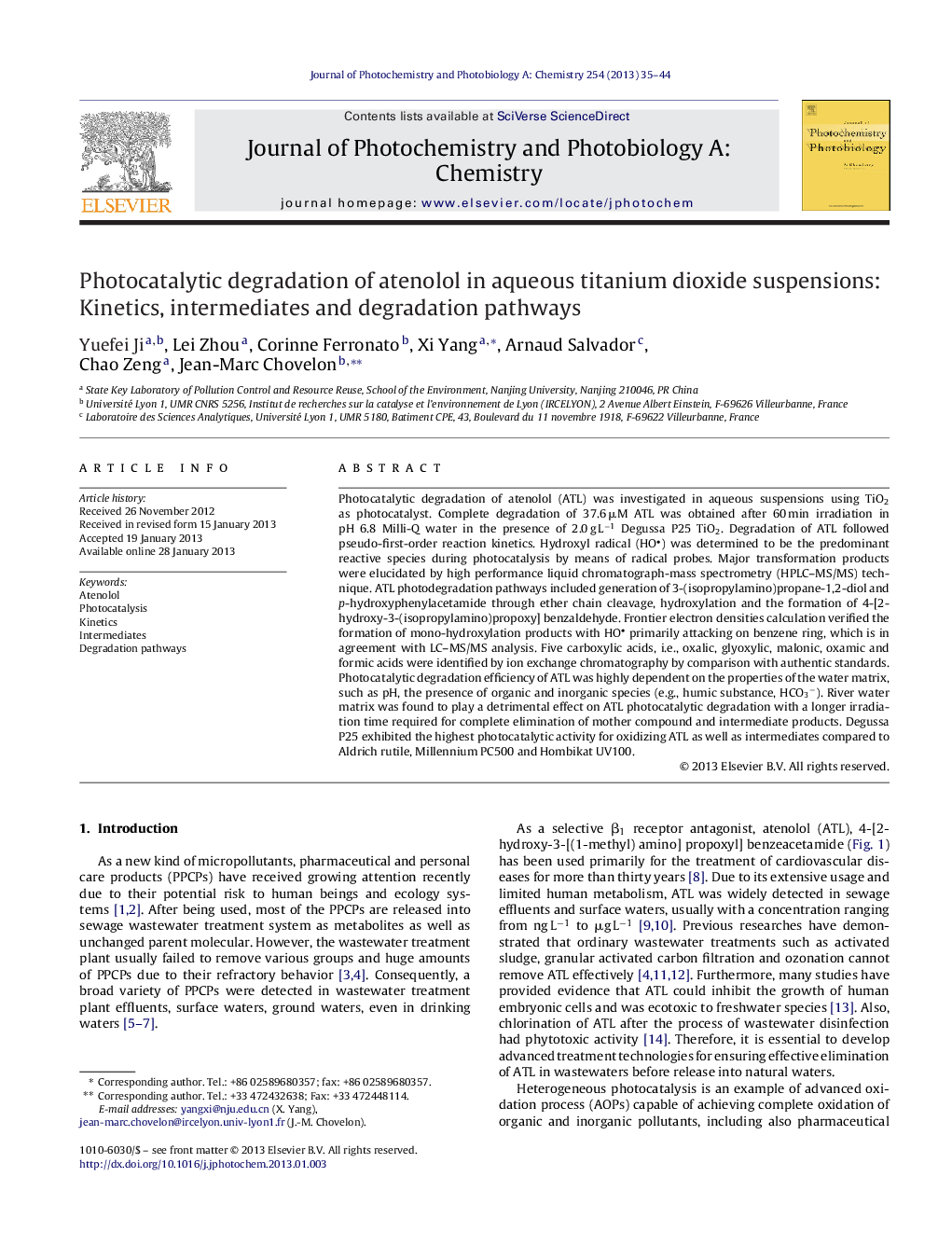| Article ID | Journal | Published Year | Pages | File Type |
|---|---|---|---|---|
| 26881 | Journal of Photochemistry and Photobiology A: Chemistry | 2013 | 10 Pages |
Photocatalytic degradation of atenolol (ATL) was investigated in aqueous suspensions using TiO2 as photocatalyst. Complete degradation of 37.6 μM ATL was obtained after 60 min irradiation in pH 6.8 Milli-Q water in the presence of 2.0 g L−1 Degussa P25 TiO2. Degradation of ATL followed pseudo-first-order reaction kinetics. Hydroxyl radical (HO) was determined to be the predominant reactive species during photocatalysis by means of radical probes. Major transformation products were elucidated by high performance liquid chromatograph-mass spectrometry (HPLC–MS/MS) technique. ATL photodegradation pathways included generation of 3-(isopropylamino)propane-1,2-diol and p-hydroxyphenylacetamide through ether chain cleavage, hydroxylation and the formation of 4-[2-hydroxy-3-(isopropylamino)propoxy] benzaldehyde. Frontier electron densities calculation verified the formation of mono-hydroxylation products with HO primarily attacking on benzene ring, which is in agreement with LC–MS/MS analysis. Five carboxylic acids, i.e., oxalic, glyoxylic, malonic, oxamic and formic acids were identified by ion exchange chromatography by comparison with authentic standards. Photocatalytic degradation efficiency of ATL was highly dependent on the properties of the water matrix, such as pH, the presence of organic and inorganic species (e.g., humic substance, HCO3−). River water matrix was found to play a detrimental effect on ATL photocatalytic degradation with a longer irradiation time required for complete elimination of mother compound and intermediate products. Degussa P25 exhibited the highest photocatalytic activity for oxidizing ATL as well as intermediates compared to Aldrich rutile, Millennium PC500 and Hombikat UV100.
Graphical abstractFigure optionsDownload full-size imageDownload as PowerPoint slideHighlights► Hydroxyl radical played a key role in the photocatalysis process of atenolol. ► Photodegradation pathways of atenolol included hydroxylation and side chain cleavage. ► Photocatalysis efficiency and products distribution of atenolol depended on the composition of water matrix. ► Degussa P25 showed the highest photoactivity compared to other catalysts.
